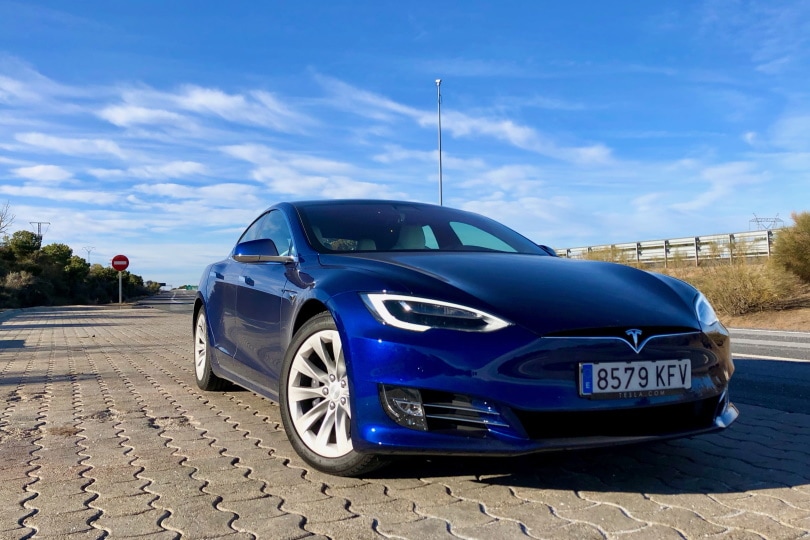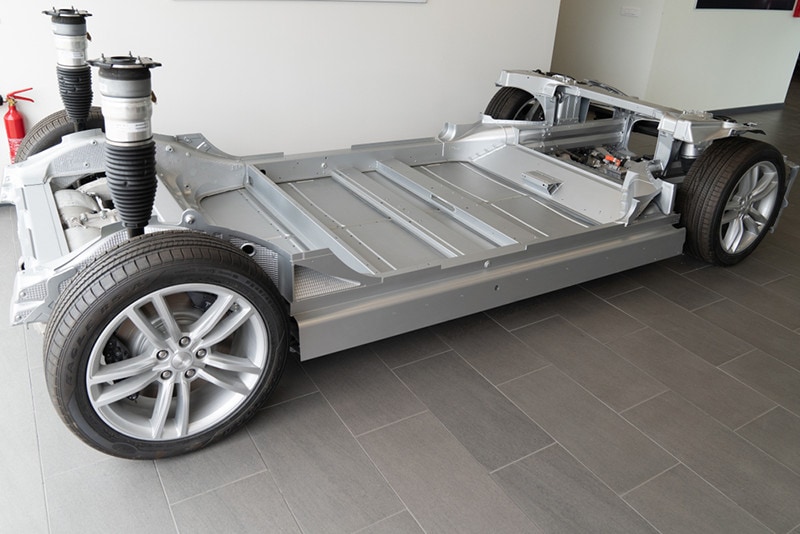Do Teslas Have a Check Engine Light?
-
Pete Ortiz
- Last updated:

Unlike regular vehicles, Tesla cars are powered by electricity rather than gas. In that case, Tesla cars do not have an engine, so their dashboards do not illuminate a check engine light when it encounters an electrical system error.
But how does it notify the driver about a system failure if it occurs within the electrical or technical circuit? Well, this article aims to uncover the answer. Hang on with us as we expound on the equivalent of the check engine light warning in Tesla cars and what to do when it appears on your dashboard.
What Is a Check Engine Light?
In regular cars, the check engine warning light comes on when the car experiences a glitch in the engine, battery, or emission system. It lights up to inform the driver about the error and to remind them to schedule service maintenance immediately.
However, since most of these components are unavailable in electric cars, you could wonder how Tesla cars notify drivers about any technical and electrical issues that could cause danger. Well, they have alternative warning lights, which could light up for different reasons.
We take a quick look at them in the section below.

What Do Tesla Cars Use Instead of an Engine?
As regular vehicles are gas-powered, all Tesla cars are electric. Electric cars have existed since the 17th century. Still, their popularity resurfaced within the last two decades when automakers reimagined newer models with greater torque capability, horsepower, and more beautiful designs.
But how do they work so excellently without an engine?
Instead of internal combustion engines, Tesla vehicles and other electric cars use rechargeable batteries to power them up. While they are typically referred to as electric car engines, the rightful term for such batteries is electric motors. You fill them with new energy by charging them electrically rather than driving to a gas station.

How Do Tesla Engines Work?
This section explores how Tesla engines work to understand why they don’t have a check engine light.
Induction Motor
The induction motor is the powerhouse of all Tesla cars. It was invented by Nikola Tesla over a century ago and is composed of the rotor and the stator.
Whereas the rotor has conducting bars that are often short-circuited at the edges, the stator has a power input that feeds the coil with electrical currents, thus creating a rotating magnetic field (RPM). It’s the magnetic effect that consequently causes the rotor bars to turn.
The speed of an electric car can be controlled by regulating the strength of magnetic fields, which can be manipulated by controlling the frequency of the alternating current supply.
What puts electric motors ahead of conventional gas- and diesel-powered engines is the fact that their induction motors can run at high speeds, typically ranging from 0 to 18,000 RPM. While internal combustion engines may produce sufficient torque and horsepower, it’s worth noting that they are limited by speed range. But from where do electric cars’ induction motors get their power?
The Battery Pack
Your phone’s lithium-ion battery cells provide the motherboard power, and so does a Tesla car’s battery pack supply power to the induction motor. In other words, all electricity in the induction motor is drawn from the battery pack. However, since the currents are direct and uncontrolled, the electric motor has a power inverter to convert them into alternating currents (AC) and release them in utilizable amounts.
The electric motor then transmits the generated power into the car’s wheels through a single-transmission system, finally powering the car.
It is unusual for any of these components to get damaged. In a rare case that it does, the car will neither move nor power on. That’s why a check engine light would be unnecessary in electric cars.

 The Warning Alerts and Indicator Lights in Tesla Cars
The Warning Alerts and Indicator Lights in Tesla Cars
When the internal components of a Tesla car go awry, the touch screen or dashboard lights up, a sign to help you locate the problem. Some models allow you to sync the settings with your smartphone so that it drops the warning notification directly on the hand gadget.
If you own one of those highly-priced electric vehicles, chances are you have seen one of the following warning signs flash across your dashboard:
Brake Warning Light
Tesla car models often display a red exclamation mark whenever there’s an issue with the brakes. While it should come on and die immediately each time you power on the car, continuous illumination could either mean the brake fluid levels are below the minimum required, or the brakes are faulty.
You should book a Tesla Service to top up the brake fluid immediately. Alternatively, you can carry out the topping-up process by yourself and save on time and expenses.

Tesla Auto High Beam Warning Light
This warning light comes on when the vehicle detects high beam headlights in the road space ahead. It, then, grays out some seconds later, and the car automatically switches its high headlight beams to low.
Whenever you notice the high beam warning light illuminate on the dashboard, do not fret because your car is just fine. The same applies in the case of auto low beam light.
ESC Warning Light
When you see a symbol resembling the traffic sign of a slippery road lighting up on your Tesla car’s dashboard, it’s because the vehicle’s Electronic Stability Control system is in action.
The ESC warning light flashes when the car is trying to stabilize on a slippery road, but if it remains constantly lit, it means there’s a problem with the ESC system. Drive it to a service maintenance company as soon as possible.
TCS Warning Light
Most Tesla car models have a Traction Control System that helps prevent their wheels from slipping. While the traction control system is constantly active, the TCS warning light can only illuminate when the system is disabled, in which case the car could:
- Be driving on snow, mud, gravel, or any other lose ground
- Be rocking out of a hole or pit.
If the warning light fails to light up in the above conditions, your car may have difficulty freeing because the traction system is still active. Get it inspected and serviced as soon as you can.
Tesla Snowflake Warning Light
Another warning light in Tesla cars is the blue snowflake icon light. In most cases, it comes on when the weather is too cold for the car to utilize the stored energy. It then disappears when the battery becomes warm enough.
If the snowflake warning light comes on in a place where you can’t imagine stopping and waiting for weather change, you should turn on the climate control feature on your smartphone, and you’ll be right on your way.

Do Tesla Cars Have an OBD-II Plug?
Almost all regular cars have an On-Board Diagnostics port (or OBD-II) that helps mechanics and car owners read, identify, and reset warning lights whenever they light up. Meanwhile, some electric cars also have them – usually located under the dashboard on the driver’s side in Tesla cars.
These ports come in handy whenever the warning lights above come on. You can simply connect to a scanner to read the error codes and determine the exact issue with your car.
However, it’s essential to understand that electric cars aren’t constrained by the industry standard that requires all data extraction to be completed using an OBD cable and scanner. Some vehicles like the Tesla Model Y and Model 3, for instance, use a console extractor that requires an adaptor to extract data from error codes rather than an OBD scanner.

How to Turn Off Tesla Warning Signs
After scanning the error and fixing it, the warning alerts and indicator signs should automatically reset. But they may keep illuminating in some cases. If you are having trouble switching them off on your Tesla, a mechanic should help you reset them. But you can also do it yourself.
Depending on your car’s make and the warning light in question, there are several ways of resetting warning lights in Tesla cars. In Model 3 and Model Y, for example, you can configure the settings on the dashboard by going to Controls and selecting the type of warning light to reset (i.e., Controls > High Beam Headlights > Off).
It’s as simple as turning off the flashlight on your mobile phone—you only need to follow the guidelines outlined in your owner’s manual.
 Conclusion
Conclusion
After reading this article, we can conclude that, although Tesla cars can display several warning lights on their dashboards, a check engine light isn’t one of them. This is because electric cars don’t have engines. Rather, they are powered by electric motors recharged when the power runs out.
Among other warning indicators, Tesla cars illuminate the following alerts on their dashboard whenever there’s an unusual occurrence or damage: brake warning lights, Traction Control System lights, Electronic Stability Control lights, and auto high beam warning lights. They should normally turn off after some minutes, but if they persist, you should get your car checked by a mechanic as soon as possible.
- What Do the Tesla Warning Lights and Icons Mean?
- Do electric cars have a check engine light?
- How to Turn Off Tesla Warning Signs
- https://teslastir.com/does-tesla-have-a-check-engine-light/
- https://teslatale.com/does-tesla-have-a-check-engine-light/
- https://www.quora.com/Why-don-t-Tesla-cars-have-engines
- https://www.researchdive.com/blog/induction-motors-main-types-and-different-applications
Featured Image Credit: Piqsels
Contents


 The Warning Alerts and Indicator Lights in Tesla Cars
The Warning Alerts and Indicator Lights in Tesla Cars